
Understanding the basics of cooking and food preparation
Food Skills and Techniques
Understanding the basics of cooking and food preparation is essential for any chef, whether they are just starting out or have been in the business for years. There are a few key things to keep in mind when it comes to cooking, such as understanding different methods of cooking, what ingredients to use, and how to properly prepare food

Preparing Stocks and Soups
“Indeed, stock is everything in cooking [...] without it, nothing can be done.”
- Auguste Escoffier
By the end of this section, you will be able to:
Classify the different types of stocks.
Identify the 6 stages that stocks are made in.
Recall the correct temperature when cooling, storing and reheating a stock.
Select the appropriate vegetable for a dish, according to its taste and aroma.

-
Stocks form the backbone of classical cookery and are an essential component in many dishes. They are simply an extraction of flavour from meat, poultry, vegetables or other ingredients into water. Stocks are commonly divided into two main types, white and brown.
Once a stock has been made, chill down to 5°C as quickly as possible. Once cooled, cover, label and keep refrigerated at 5°C or below. They can also be frozen at -18°C or lower. Reheat to a boiling point for 2 minutes before use. This will destroy any harmful bacteria.
Sauces are an integral part of any dish. They serve to marry components adding richness, moisture, and an additional layer of flavour and texture. It is often said that all sauces have their origins in one of the five ‘mother sauces’.
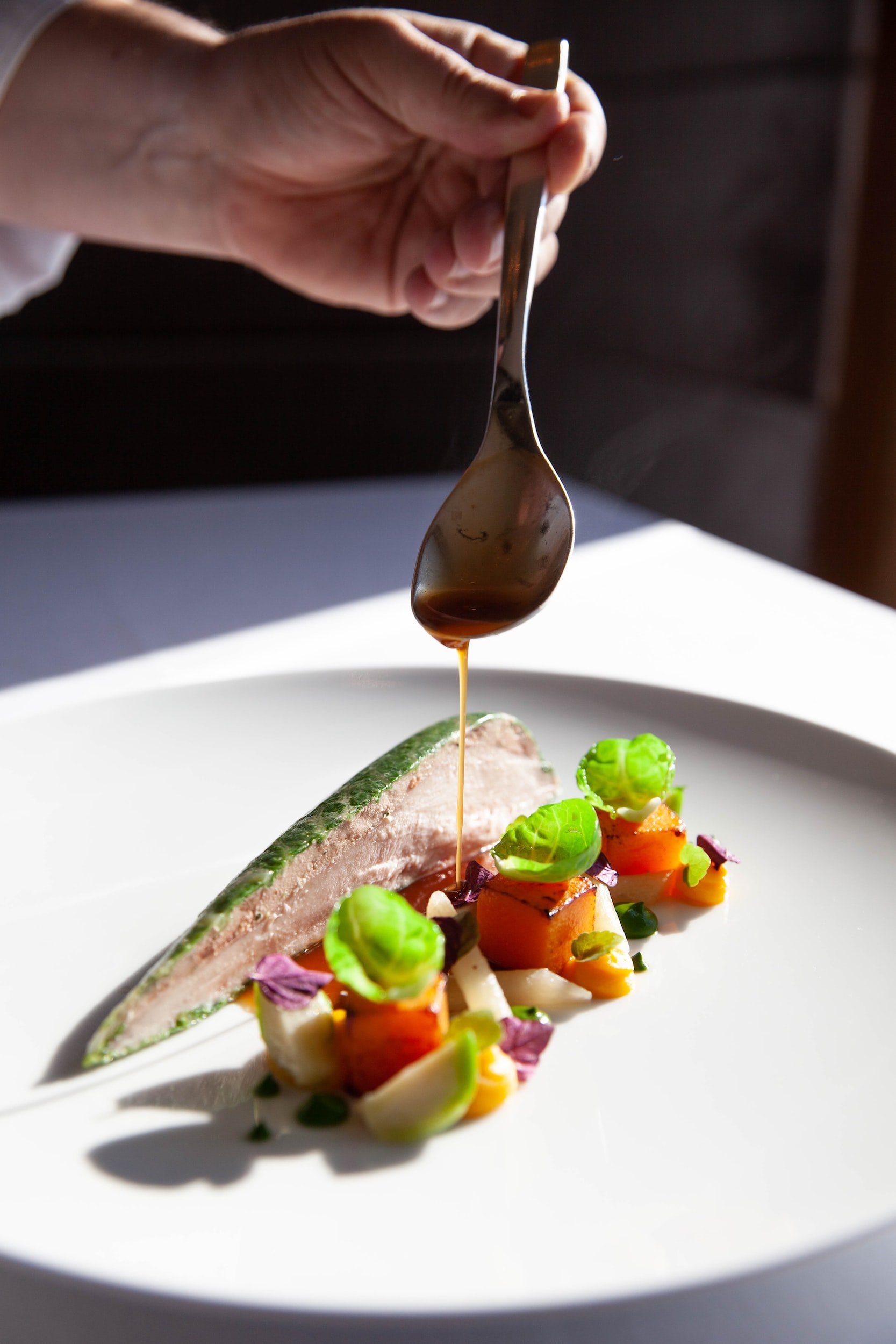
Five Mother Sauces
It is often said that all sauces have their origins in one of the Five ‘Mother Sauces :
Béchamel
Velouté
Espagnole
Sauce Tomat
Hollandaise
Learn fruits and vegetables
Fruits and vegetables are by far the largest food groups you will come across as a caterer. It is a wide and varied group containing plants, herbs and fungi that can be prepared as a meal in themselves or as an accompaniment to a meat protein.
Both fruits and vegetables can be divided into separate groups and sub-groups, determined by how they grow, the part of the plant being used, and the particular species.

Groups of Vegetables
We will discuss the groups most commonly used to differentiate fruits and vegetables.

5 Main Fruit Categories
Citrus
Berries
Hard Fruits
Stone Fruits
Exotic Fruits

-
Fruits and vegetables are by far the largest food groups. They can be prepared as a meal in themselves or as an accompaniment to a meat protein. Both fruits and vegetables can be divided into separate groups and sub-groups, determined by how they grow, the part of the plant being used, and the particular species.
Fruits can be divided into 5 main categories: citrus fruits, berries, hard fruits, stone fruits, exotic fruits. All can be used in a number of ways, both sweet and savoury, to add flavour to a dish or to form the main part of the dish itself.
Preparing and Cooking Meat
By the end of this section, you will be able to:
Classify the 3 categories of beef cuts.
Identify the temperature needed for each level of cooking for different beef cuts.
Recognize the different cuts of lamb and their cooking methods.
Discuss why it's crucial to thoroughly cook pork meat.
Explain why freshness is key to good offal.

Beef - Preparing, Cooking

Lamb - Preparing , Cooking

Pork - Preparing ,Cooking
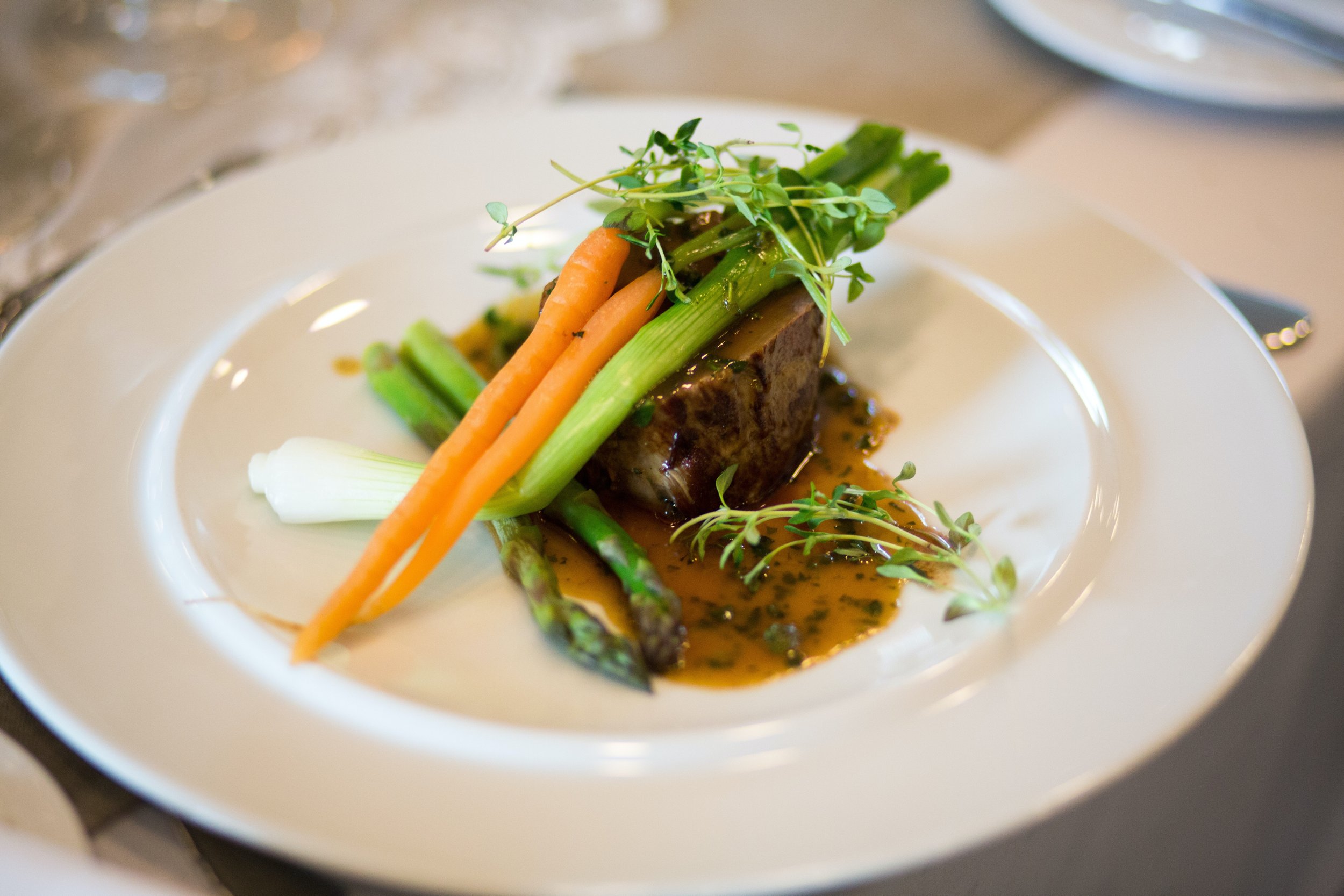
Venison Preparing , Cooking
-
Beef is perhaps the most prized of all meats. The price will vary according to the rearing methods used, the cut of meat, and the cattle from which it came.
Beef cuts, as with all cuts of meat, can be divided into 3 categories: those that require long, slow cooking; those that are best roasted; and those that are best quickly grilled or fried. The preferred cooking method for each cut is determined by the size and texture of the meat.
Lamb is a sheep of less than six months old and is prized for its sweet, flavoursome meat. As the sheep ages, its meat becomes tougher and stronger in flavour.
The pig is an extremely versatile animal, with almost every part of it being edible - from the nose right down to the tail. It also forms the basis of many cured products such as hams, bacon and salamis. Pork meat is taken from the domesticated pig, which was bred from wild hogs and boars.
Venison is the meat of the deer. It can vary in strength from mild to very ‘gamey’ depending on the type and sex of the deer, and whether it has been ‘hung’. Hanging is a common practice used with game meats and birds. This serves to tenderise the meat and develop its flavour.
Offal is the edible internal organs of an animal. It requires careful handling and storage, with freshness being key to good offal.
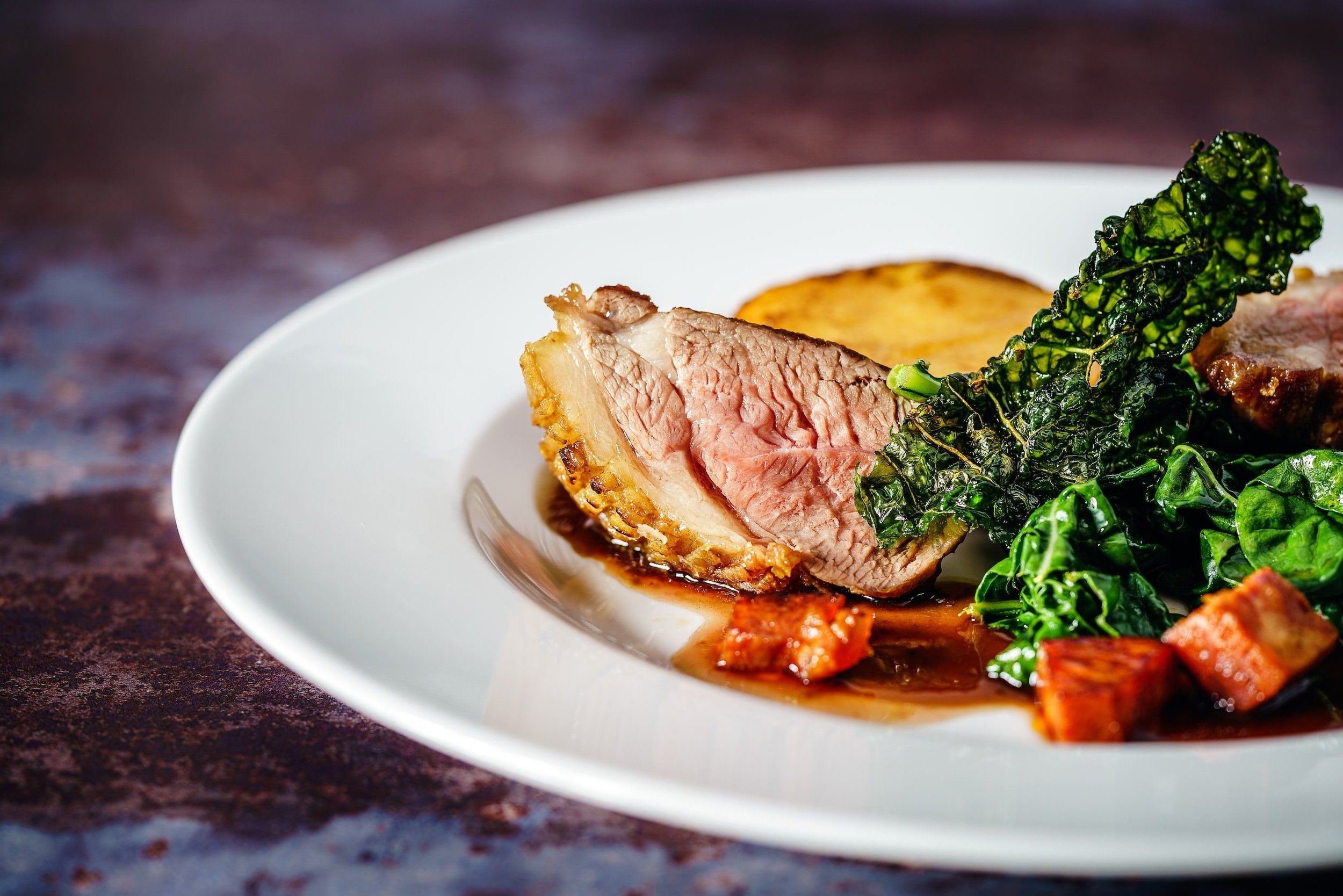
Poultry - Preparing ,Cooking
By the end of this section, you will be able to:
Identify the different anatomy of poultry.
Recall the two groups that poultry is divided into.
Summarize the types of poultry commonly available.
Classify fresh poultry by appearance and smell.
Describe different cooking methods of Poultry.
Recognize the correct cooking temperature and times for poultry.
-
Poultry is the term used to describe all domestic fowl; that is, winged animals bred for food. This usually means chicken, turkey, goose and duck but it can also include domestically bred guinea fowl, pheasant and quail.
The breast and legs contain the most meat and are the most commonly eaten cuts of poultry, though the neck, wings, feet and even the comb can be eaten.
Poultry can be divided into two groups: Waterfowl and Landfowl.
When roasting a whole bird it is advisable to remove the wishbone before trussing and roasting. The wishbone sits at the neck end of the bird and its removal allows for easier carving once the bird has been cooked.
Duck contains a lower proportion of meat to fat and bone when compared to chicken. Their fat content is such that the fat rendered from the skin during the cooking process is sufficient to cook the breast. Duck fat has great flavour and can be used as a cooking medium for frying and roasting foods.
Cooking times and techniques vary from bird to bird. Whole roasted birds, particularly smaller ones, may benefit from barding (a protective layer of bacon or fat) over the breasts before roasting.
When roasting a whole bird it is advisable to remove the wishbone before trussing and roasting. The wishbone sits at the neck end of the bird and its removal allows for easier carving once the bird has been cooked.

Seafood - Preparing , Cooking
By the end of this section, you will be able to:
Classify the 2 categories fish are divided into.
Distinguish a fresh fish from a spoiled fish.
Indicate various types of flatfish and round fish.
Describe how to gut and descale a fish.
Recognize the humane way of cooking large crustaceans.
Identify what the cephalopod group includes.
-
Fish and shellfish can be divided into two categories: saltwater and freshwater. Within those two categories, fish can be divided into two further groups: Round fish and Flatfish.
When choosing fish, it should smell fresh and clean, with bright gills and eyes and firm flesh. In contrast, spoiled fish may have a slimy feel and will not appear as vibrant, their eyes may look glazed and have a noticeable smell.
Round fish tend to have relatively meaty flesh when compared to flatfish. All flatfish are born as round fish. Flatfish have 4 fillets rather than the 2 fillets of round fish: two fillets from the upper side, and two from the lower side of its body. Flatfish meat is generally more delicate than that of round fish, and the fillets much thinner.
Shellfish are crustaceans or molluscs, distinguishable by their tough outer shells and best bought live. Shells should be intact and closed or, if open, should close when tapped.
Both molluscs and crustaceans are invertebrates, meaning they have no inner skeleton. Large crustaceans, such as lobster and crab, should be placed in a freezer for two hours before cooking. This renders them unconscious and is the humane way to prepare them.
Cephalopods include octopus, squid and cuttlefish. They are distinguishable by their large heads with numerous protruding arms.

Preparing Egg Dishes
We will learn 4 of the most common types of eggs
By the end of this section, you will be able to:
Compare and indicate fresh & old eggs.
Distinguish eggs based on their flavour and colour.

-
Eggs are one of the most versatile ingredients in the kitchen. They can be used in both sweet and savoury dishes, and are routinely used for their enriching and binding properties. A hen’s egg is by far the most widely used type of egg in the kitchen. When recipes call for the use of eggs they are referring to hen’s eggs unless otherwise specified.
The easiest way to judge the freshness of an egg is to check its use-by date. If this is not available, the water test can be used. This is particularly important as eggs carry a high risk of salmonella contamination.

Preparing Grain and Pasta
By the end of this section, you will be able to:
Classify different types of rice by their appearance.
Estimate the cooking times of rice.
Describe the various methods for cooking rice.
Indicate the many ways grain is used in dishes.
Recognize how pasta can be flavoured using a wide selection of ingredients.
Describe the pasta making process.
One of the top notch matters about grains and pastas is, each tradition round the world eats some variety of grain or pasta. And they are, for the most part, splendidly impartial in flavor, so they can be tailored to each taste.

-
Rice is a type of grain, meaning that it is part of the grass family of plants. This family includes wheat, maize, quinoa, barley, oats and many others, but as rice is by far the most widely eaten grain across the world.
Rice can be broadly categorised as one of three types: long-grain, short-grain, or hybrid. It can harbour the spore-forming Bacillus cereus bacteria therefore, it must be treated with care.
Grains are a family of edible grasses that include rice, wheat, maize and oats. They are some of the oldest cultivated crops in the world, forming many staple diets. There are hundreds of different types of grain produced around the world, some with widespread popularity, others unique to particular areas.
Pasta is essentially a mixture of flour and liquid - usually water or egg. There are thought to be over 300 types of pasta. We often think of pasta as an Italian invention but flour noodles have been eaten in Asia for much, much longer than in Europe.
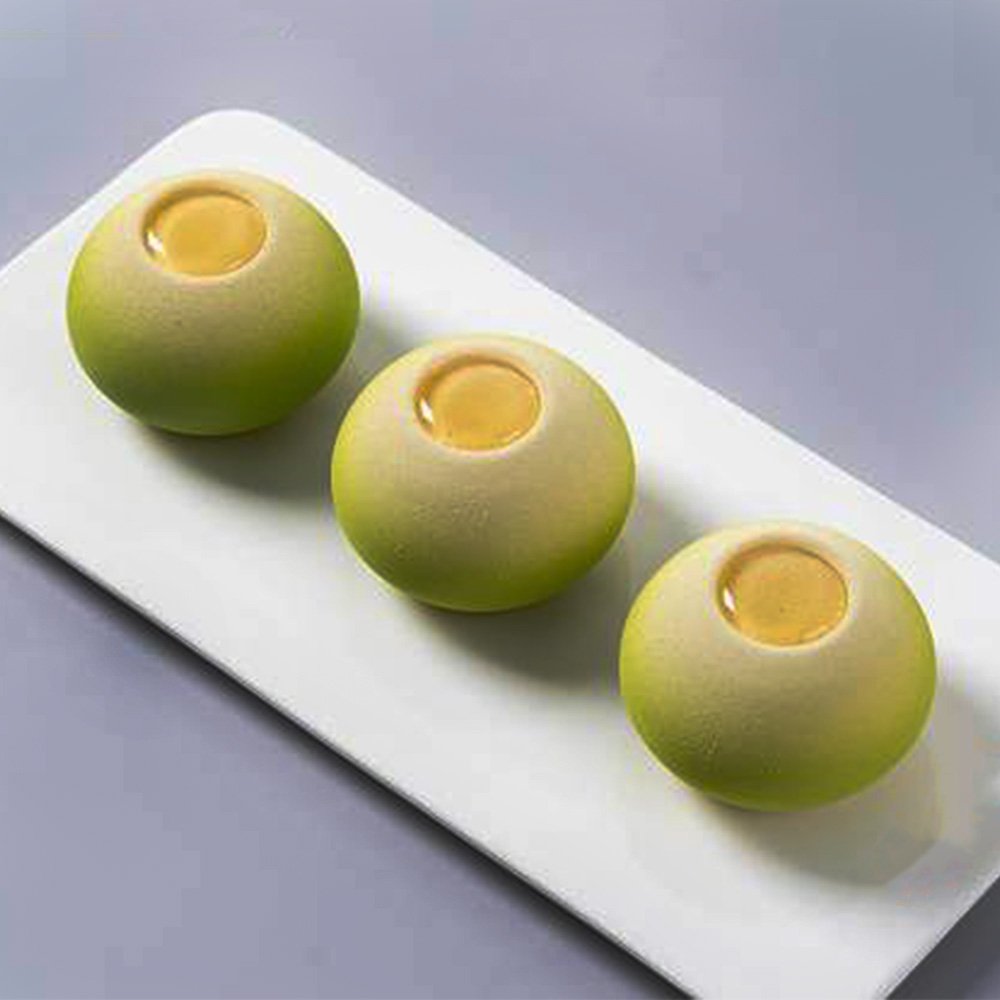
Preparing Desserts
Meringues , Gelatin , Cream and Bread Desserts
By the end of this section, you will be able to:
Classify hot and cold desserts.
Describe a set dessert such as meringues, gelatine, etc.
Identify the three main ways that gelatine strength is measured.

Prepare Paste Products
By the end of this section, you will be able to:
Describe the difference between classic & rough puff pastry
Explain the correct method of turning and folding puff pastry
List the uses for leaf pastes
-
Desserts represent a huge category of dishes, some of which are quite specialised in their production. Hot desserts are served warm, either immediately after having been cooked or having been warmed prior to service. Cold desserts are served at room temperature or below.
Meringues are made by whisking egg whites to trap tiny pockets of air inside them, before adding sugar to stabilise them. They are then cooked to set the egg white and hold the structure firm.
Gelatine is used to set a dessert that is to be served at room temperature or chilled. It is graded by its ‘Bloom strength’. This is normally graded as bronze, silver or gold - bronze being the lowest Bloom value and gold being the highest. The Bloom value refers to the firmness or strength of the set gel.
Pastry is used throughout the kitchen, from canapés and amuse bouches through to desserts and petits fours, and every course in between. All from the same core ingredients of flour, water and fat.
Suet is the name given to the fat that forms around the kidneys of animals. It sets to a waxy consistency and has a low melting temperature and rich flavour, making it ideal for use in steamed puddings and dumplings.
Leaf Pastes are simple pastes rolled out to extremely thin sheets which are then layered and used to wrap or top food. The most famous example of a leaf paste is filo (or phyllo).
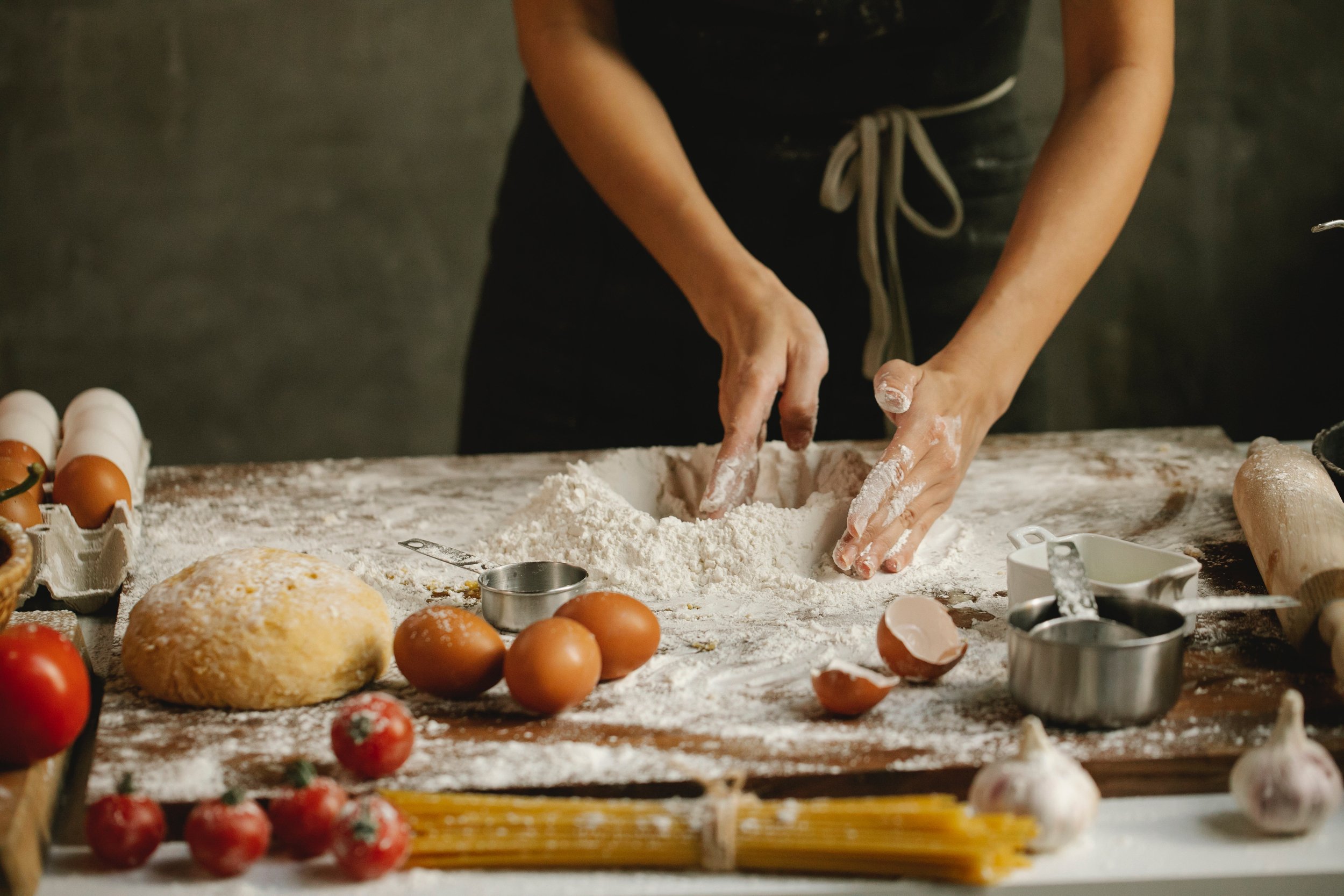
Making Biscuits, Cakes & Dough
By the end of this section, you will be able to:
Identify the terminology of biscuits, cakes and sponge
Classify the two general types of biscuits
Recognize that shortbread makes a great accompaniment to soft desserts
Summarize how to use a stencil paste
Understand how and when fermentation occurs
List the uses of yeast in the kitchen
-
Biscuits, cakes and sponges fall under the remit of ‘pastry’, as this term encompasses all things sweet and baked. They can be separated into two general types: rolled and dropped.
Shortbread falls somewhere in between a rolled biscuit and a dropped biscuit. It is made using the creaming method. It makes a great accompaniment to soft desserts.
Stencil paste is a loose mixture used to form fine, thin wafer-like biscuits. Thin biscuits are produced using stencil paste are commonly referred to as tuile biscuits. It is designed for use with a stencil too.
The term ‘cake’ incorporates everything from heavy fruit-based bakes to light, airy sponges. These can be created by a number of methods.
The creaming method incorporates air into the mix which helps the cake to rise during baking. The rubbing method involves butter and flour rubbed together before the remaining ingredients are added to form a heavy batter. The melting method involves melting butter and sugar together before being added to dry ingredients and forming into a dough.
Fermentation occurs when yeast is introduced to a product. Yeasts are all around us. Bread commonly contain 4 ingredients: flour, water, salt, and yeast. The initial baking stage for bread is forming, then kneading, next proofing, after that knocking-back, following 2nd proving, and finally shaping.
















